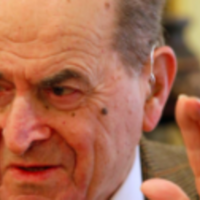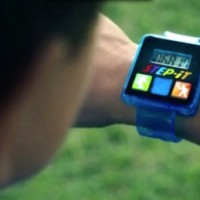There’s been a lot of concern over the “skyrocketing” use of antidepressants over the last 20 years. Many experts believe that these rising numbers indicate either higher depression rates or an over-diagnosis of mental illness.
But there is at least one more factor, courtesy of a new study published in the journal JAMA: An increasing number of people are taking antidepressant medications for completely separate conditions, according to an analysis of nine years of prescription data in Quebec, Canada.
Only about 55 percent of antidepressant prescriptions were written to alleviate depression symptoms, while the rest were written for a wide variety of other conditions that aren’t related to depression. Some of these were prescribed in what’s known as “off-label” use — when a medicine is prescribed to treat a condition for which it wasn’t officially approved, or when a medicine is taken in a different dose or method than the manufacturers originally intended.
While using medications for unapproved conditions is common and perfectly safe under the care of a doctor, the increasing rate of off-label antidepressant use is an important reminder for experts not to assume that patients who are taking antidepressants have depression, said lead study author Jenna Wong, a PhD student with the department of epidemiology and biostatistics at McGill University in Montreal.
Other reasons people take antidepressants
We’ve known for a while that there are an increasing number of reasons to use antidepressants off-label, but Wong’s study is among the first to break down the most common reasons by percentage.
Wong and her colleagues analyzed over 100,000 antidepressant prescriptions written from 2006 to 2015 for approximately 20,000 patients in prescription databases in Quebec. These databases are unique because they contain a field that allows the doctor explain why the medication is being prescribed — a feature Wong says should spread to more prescription databases.
Though the study data came from Canada, off-label use was determined using both Health Canada and U.S. Food and Drug Administration classifications. The FDA has given approval for antidepressant use in treating some of the other conditions, but interestingly, doctors also prescribed antidepressants for conditions which are off-label for all antidepressants as a class.
In all, 29 percent of antidepressant prescriptions were prescribed for off-label use, Wong notes. Here are the most common alternate uses:
1. Anxiety
Certain classes of antidepressants are FDA-approved for anxiety disorder treatment. And Wong found that 18.5 percent of antidepressant prescriptions were in fact written to address anxiety, instead.
2. Insomnia
About 10 percent of prescriptions were written to address insomnia. People with insomnia have a ten-fold risk of developing depression, while insomnia or other sleep problems are a common symptom in people with depression. That’s why they sometimes share the same treatment, notes the Sleep Foundation. Doctors in Wong’s study tended to prescribe mostly off-label antidepressants for insomnia and pain; though there is one FDA-approved antidepressant for insomnia, about 97 percent of the prescriptions written for insomnia were off-label.
3. Pain
The Mayo Clinic calls antidepressants a “mainstay” in chronic pain treatment for their ability to dull the perception of pain — an ability that is not fully understood by researchers.
Pain disorders made up six percent of the antidepressant prescriptions in Wong’s study. A few antidepressants are FDA-approved to help alleviate chronic pain, but 83 percent of the antidepressants prescribed for pain were off-label, according to Wong’s analysis.
4. Panic disorders
Four percent of antidepressant prescriptions were indicated for panic disorder, which includes agoraphobia, social phobia and widespread anxiety and can lead to physical symptoms like a racing heart rate, trembling, chest pain and shortness of breath. The American Academy of Family Physicians notes that antidepressant medication can alleviate some of these symptoms and can even stop the recurrence of panic attacks. Several antidepressants are FDA-approved for treating panic attacks.
5. Fibromyalgia
The treatment of fibromyalgia, a disorder with symptoms like musculoskeletal pain, fatigue and sleep issues, made up 1.5 percent of antidepressant descriptions. Antidepressants can help with the pain and fatigue that fibromyalgia can cause, the Mayo Clinic notes, and some of them are approved by the FDA for treatment of the condition.
6. Migraine
Migraines, which are severe headaches that can be accompanied by nausea, vomiting and what’s known as “aura” (dizziness, visual hallucinations and light sensitivity), can sometimes be treated with a certain class of antidepressant known as a tricyclic antidepressant. Using any antidepressant to treat migraines is an off-label use of the medication, but experts believe that it changes chemical levels in the brain, which in turn helps prevent migraines. Prescriptions for migraines made up 1.5 percent of the prescriptions in Wong’s study.
7. Obsessive-Compulsive Disorder
Obsessive-compulsive disorder made up 1.1 percent of the prescriptions analyzed in Wong’s study. Several antidepressants have been approved by the FDA to treat OCD because it can help make symptoms more manageable. They are a first-line pharmaceutical treatment for the disorder, the Mayo Clinic notes.
8. Menopause symptoms
Just 0.8 percent of the prescriptions in Wong’s study were written to address vasomotor symptoms of menopause like hot flashes or night sweats. Treating these menopausal symptoms are off-label use for all antidepressants, but recent research from 2014 has shown that taking antidepressants was more effective than a placebo at treating them. However, antidepressants did not outperform the standard of care for hot flashes and night sweats, which is estrogen supplements.
Off-label use is perfectly safe
While “off-label” use might seem alarming, the FDA notes that it can be an option when approved treatments don’t work, or when prescribed for people with conditions that don’t have an approved treatment.
Many off-label uses are backed by scientific evidence from clinical trials, just not full government approval, as the list above demonstrates. Off-label drug use is also common in certain populations, especially among children, because most drugs prescribed to pediatric patients were never tested in children. This makes many pediatric prescriptions necessarily off-label.
Why antidepressants are so commonly used for other conditions
While she didn’t talk to doctors about why they prescribed so many antidepressants off-label, Wong’s team has two theories about why this is such a common application.
The first is that pharmaceutical companies may be aware of clinical trials that test their drugs beyond approved use, and could be promoting and marketing the findings to doctors, Wong said.
The second theory is that doctors are simply observing changes in their patients after they start taking certain medicines, and then applying these insights to other patients in their practices.
Neither of those two drivers of off-label use are unique to Quebec or Canada, Wong concluded, which means that even though this database only has information about patients in Quebec, there’s no reason to think that this is a Quebec-only phenomenon. But her research does underscore the need for more experts to recognize that simply having an antidepressant prescription is not a proxy for a depression diagnosis or depression treatment. Wong also called for more research on the off-label uses of antidepressants.
Read more: http://www.huffingtonpost.com/2016/05/26/reasons-people-are-taking-antidepressants_n_10168208.html




















